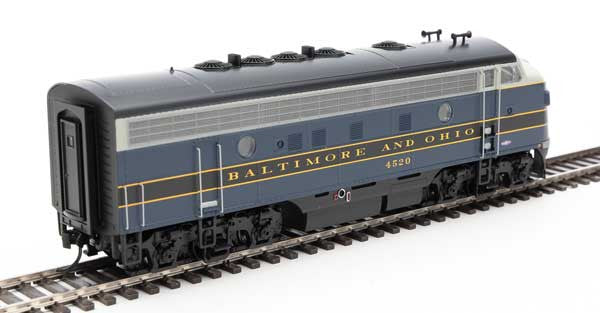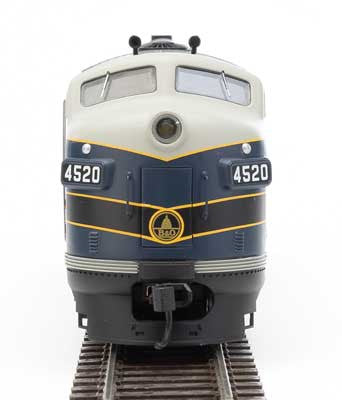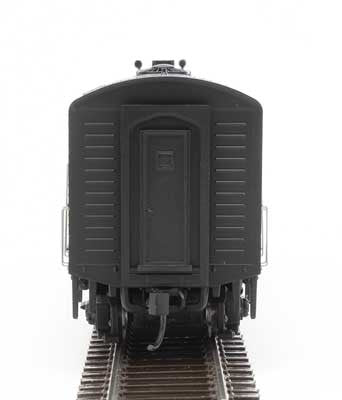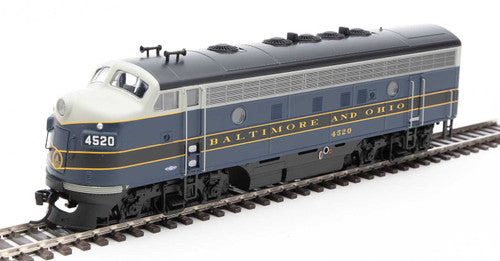Add the classic diesel power of WalthersMainline F7 diesels to your HO roster quickly! These locomotives, introduced in 1949 when railroads were rapidly dieselizing, were great for both freight and passenger service. They came in various color schemes for almost every US railroad and many were in service until the 1980s. Key features of these WalthersMainline F7 locomotives include a one - time run of specific road numbers (limited quantity, order now!), prototypes for freight and passenger service from 1949 - 1980s, colorful paint and lettering, factory - installed handrails. They are available with ESU Sound for DCC and DC layouts. The sound features 4 function outputs with brightness control, is fully DCC compatible, has multiple speed steps, dual - mode operation, changeable air horns and bells, prime mover sounds, compressor, dynamic brake, and realistic lighting effects. The powerful drive, similar to WalthersProto locos, has a five - pole skew - wound motor, 14:1 gear ratio, helical - cut gears, all - wheel drive and electrical pickup, dual machined brass flywheels, and a heavy die - cast metal chassis. There's also an LED Mars Light and headlight, a 21 - pin plug for easy DCC conversion, correct size RP - 25 metal wheels, and Proto MAX metal knuckle couplers. Note: When using Walthers - branded DCC - equipped locomotives in DC mode, don't use power packs over 18V. You can program alternate horn and bell sounds on the sound decoder using specific CVs.




Using your WalthersMainline F7 locomotive is a breeze. First, if you're using a DC power pack, make sure it doesn't exceed 18V to avoid issues with the decoder. Connect the locomotive to your layout as you normally would. If you want to enjoy the sound features, the locomotive comes with ESU Sound. You can program different horn and bell sounds using the provided CVs. For example, you can change the horn sound by setting CV163 to different values. When it comes to maintenance, keep the locomotive clean. Wipe off any dust or debris regularly. Check the wheels and couplers for any signs of wear and tear. The gears are designed for quiet operation, but if you notice any unusual noise, it might be a good idea to have a look at them. Also, since the locomotive has a heavy die - cast metal chassis, handle it with care to avoid any dents or damage. If you plan to convert your Standard DC model to DCC, use the 21 - pin plug for an easy conversion process.